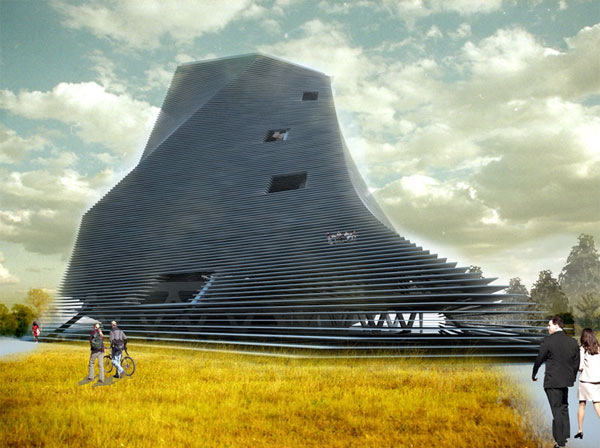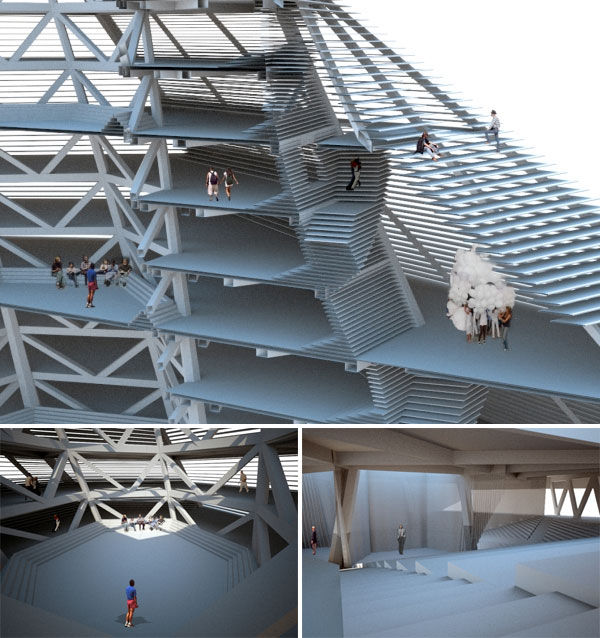The TU Delft School of Architecture was burned down during a fire in 2008. The University official held an architectural competition in 2009 to build a new school and architect Sid Wichienkuer was selected among the finalists.
The use of section and topographies become the driving force behind this project. By reconstituting and reconsidering each of the precedents, the resultant project intends to not reinvent but understand how section can foster productive architectural relationships. The gathering/communal spaces are stacked through the core of the building – operating as a central gathering space for offices, studios, and the greater community as a central, unifying element that serves the same purpose for a variety of programs.
The ground level is extremely porous with the intention of capturing the interest of passerbyers and architects alike. The center of the space is the auditorium space that can be configured to accommodate multiple size and varyingly public gatherings. The option remains to accommodate even the largest of gatherings as a gesture toward bringing thinkers and doers of all-calibers, whether architects or not, into the dialogue of the building.
The language of productive topographical surfaces is exploited for creating circulation, shading users, creating usable surfaces, storing objects, and seating. The resulting dense, carved space envelopes all the users of the building.
















